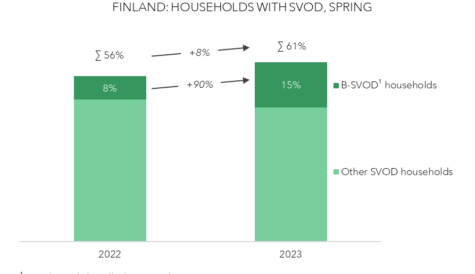
After more than 40 years of operation, DTVE is closing its doors and our website will no longer be updated daily. Thank you for all of your support.
FIFA World Cup research raises questions over live sports viewing
UK media regulator Ofcom has used the occasion of the 2022 FIFA World Cup to explore variations in audience viewing intentions. Among its key findings is a clear distinction in the way older and younger audiences consume live sport in the UK.
Based on a pre-event survey of 2000 people, Ofcom found that “only half (51%) of young people aged 18 to 24 said they’d watch whole games live on TV, compared to three quarters (76%) of the older group of respondents aged 55 or older.” This presumably has Implications for the valuation of sports rights contracts going forward.
Rather than watch entire games live, twice as many younger respondents (18 to 24) as older respondents (55+) said they would keep up via updates on social media – 28% versus 14%. And almost three times as many younger people said they would be watching whole matches in public spaces such as pubs and big screens – 38%, compared to just 13% of those aged 55+ who said they planned to do this.
The findings are based on a survey of 2,000 people. In terms of overall audience intentions, not broken down by age, 44% said they’d be watching some, or all, of the matches. However, 46% said they wouldn’t be following the tournament at all. The late figure may reflect UK levels of disinterest in the event, but it might also include a sector of the population unhappy about the decision to host the event in Qatar. Labour Party leader Kier Starmer, for example, decided not to attend Qatar over concerns about the country’s human rights record and its stance on LGBTQ+ rights.
Of those who do plan to watch or listen to the World Cup, more than two-thirds (69%) said they’d be doing so on TV. However there was a divergence between age groups again. For example, less than half (49%) of 18- to 24-year-olds said they’d watch the tournament on TV, compared to 89% of over-55s. More than twice as many of this younger age group said they’d be using a laptop or tablet – 29% compared to 14% of over-55s. There was also a difference in age groups for those who plan to keep up using their smartphone to watch games, with more than three times as many younger people than older people saying they’d be doing this – 34% versus 10%.
Other figures show also show the changing nature of sports viewing. For example, three times as many younger people than older people said they’d be using ‘watch along’ channels on YouTube and other platforms – 12% versus 3%. And twice as many younger people said they’d be using dedicated apps to keep up with the action – 26% compared to 13% of those aged 55+. There was also an age divide in plans to use social media, with more than twice as many younger people saying they will be using social channels while watching the live action on TV – 42% compared to 16%.
In related news, UK broadcaster ITV say 18 million viewers tuned into the World Cup match between England v USA on ITV1 on Friday night (peak figure). ITV also had its biggest day of the year for streaming, and third biggest on record, with 18m streams.



